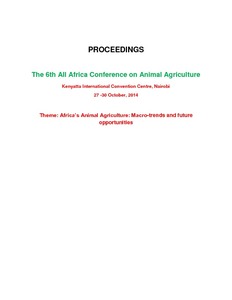Resource information
Pastoralism is used to describe a society that derives majority of their food and income from livestock. This form of farming system is largely practised in the arid and semi-arid lands (ASAL). It is estimated that 70% of the landmass in the Horn of Africa is dry land; in Kenya 80% of the landmass is classified as ASAL, while approximately half of Tanzania consists of dry land. These dry lands support wild resource harvesting, tourism but most importantly livestock rearing. It is estimated that over 75% of cattle herds in Kenya and 90% in Tanzania are kept by pastoralists who supply the bulk of meat consumed in the countries. In this paper we present current animal health challenges and opportunities being faced by pastoral farmers in Tanzania and Kenya based on primary data collected in Kajiado County, Kenya and Tanga and Morogoro regions in Tanzania. In the midst of many challenges and opportunities, food safety and food security are never assured amongst the pastoralists. We highlight pastoral community high livestock dependency for food and income, market access to livestock products, access to animal and human health services, livestock-wildlife interaction, factors that hinder increase of livestock assets and explore the knowledge of disease and exposure to zoonoses within the pastoral community.



